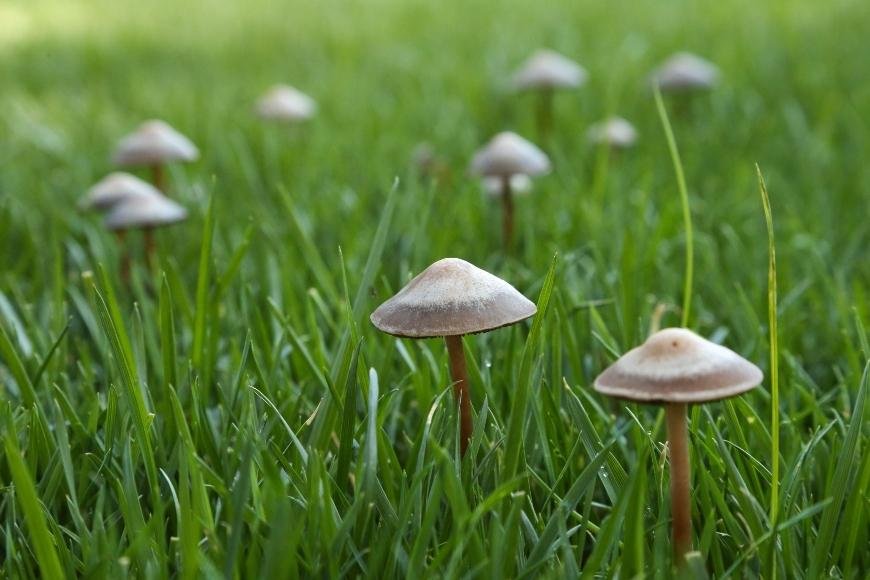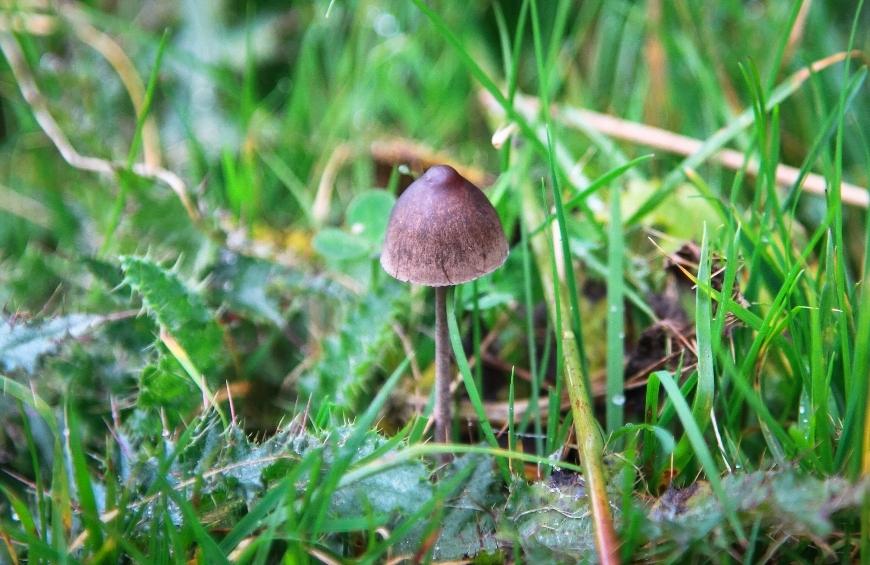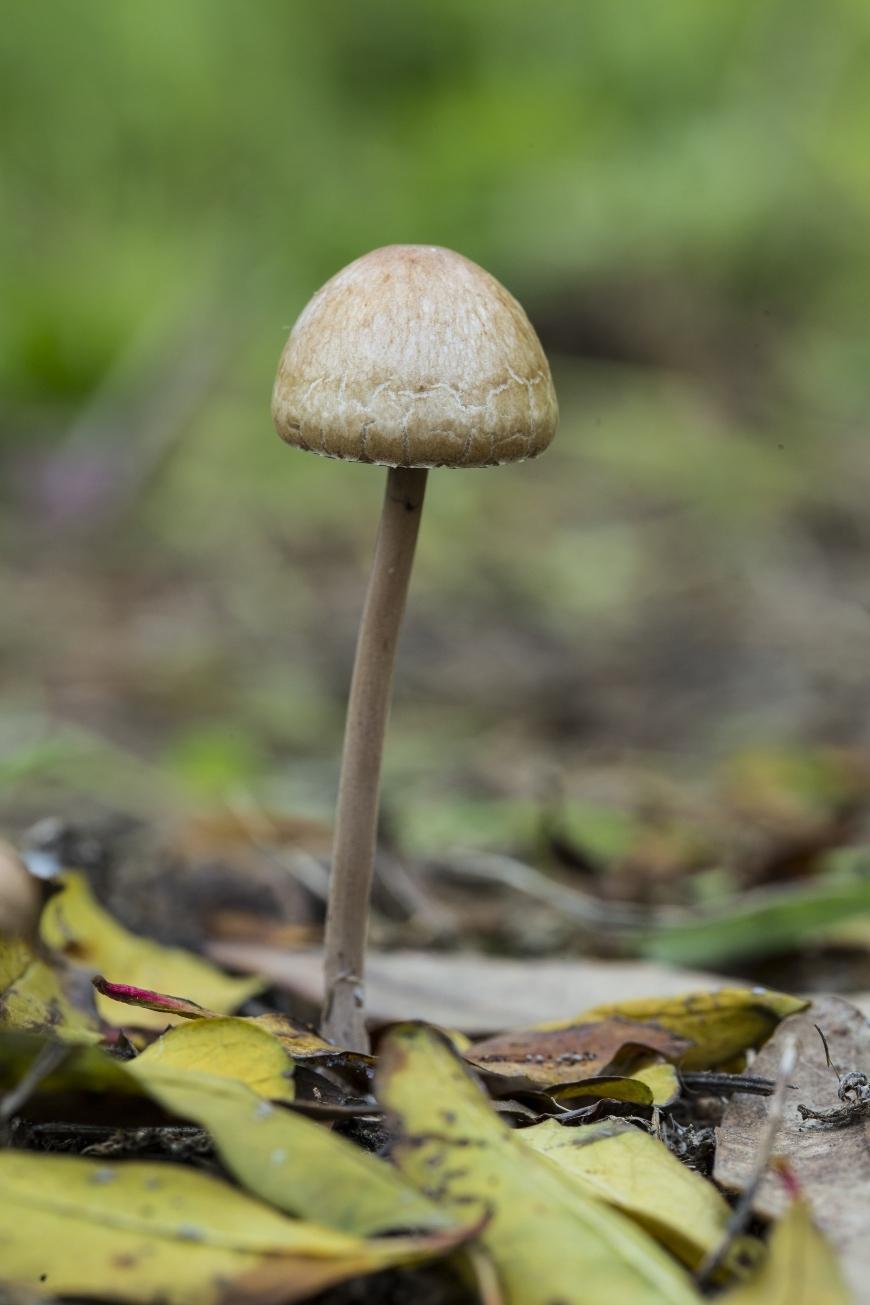Panaeolus Cinctulus: What You Need to Know
Explore the world of psychedelic mushrooms with our guide "Panaeolus Cinctulus: What You Need to Know," covering identification, effects, dosage, and legality.

As the popularity of magic mushrooms continues to grow, one species that has piqued interest is Panaeolus Cinctulus. This article seeks to give an extensive analysis of the essential information about this extensively spread and captivating mushroom.
Panaeolus Cinctulus, also known as banded mottlegill, is a cosmopolitan species found across different continents. But how do you accurately identify them? And where can they be located? We'll delve into these questions and more.
From discussing the mystical effects associated with consuming Panaeolus Cinctulus, dosage considerations for beginners and seasoned users alike, potential risks involved, preparation techniques for safe consumption - we've got it all covered here. Moreover, we will also touch upon the legality surrounding possession and consumption of these psychedelic mushrooms.
If you're interested in exploring or growing your own Panaeolus Cinctulus or simply want to learn more about them – this guide on "Panaeolus Cinctulus: What You Need To Know" is just what you need!
Table of Contents:
- Identifying Panaeolus Cinctulus
- Where to Find Panaeolus Cinctulus
- Effects of Panaeolus Cinctulus
- Dosing Panaeolus Cinctulus: What You Need to Know
- Potential Risks Associated with Consuming Panaeolus Cinctulus
- Proper Preparation Techniques for Consuming Panaeolus Cinctulus
- Legal Status of Panaeolus Cinctulus
- FAQs in Relation to Panaeolus Cinctulus: What You Need to Know
- Conclusion
Identifying Panaeolus Cinctulus
If you're a magic mushroom enthusiast, chances are you've heard of Panaeolus cinctulus. Panaeolus cinctulus is a widely distributed mushroom species known for its psilocybin content. But how do you identify panaeolus cinctulus?

Size and Shape
Panaeolus cinctulus is relatively small, with caps ranging from 1.5 to 4 cm in diameter. The cap shape varies depending on age - young specimens have conical or bell-shaped caps while mature ones tend to flatten out.
Belted Stem
A distinguishing feature of this mushroom species is a dark brownish belt-like ring on the stem, hence its name 'cinctulus', which means 'belted'. The color of these belts often contrasts with the rest of their light-colored bodies, making them easily identifiable.
Habitat
Panaeolus cinctulus grow in grassy areas like lawns and meadows but are known to sprout from dung as well.
While identifying Panaeolus cinctulus (not to be confused with panaeolus subbalteatus or panaeolus cyanescens) might seem straightforward enough, always exercise caution when foraging for wild mushrooms. Misidentification could lead to ingestion of toxic varieties causing severe health risks.
To ensure safety and accuracy during identification, consider investing time into learning more about mycology or consulting experienced mushroom hunters or professional mycologists before consuming any wild-gathered specimens.
Where to Find Panaeolus Cinctulus
If you're on the hunt for the elusive Panaeolus cinctulus, also known as the banded mottlegill, you'll need to know where to look. These mushrooms have a penchant for particular places, being found in various areas around the world.
Environment is Key
Panaeolus cinctulus is a coprophilous (dung-loving) species that often grows on horse or cow manure. However, they can also be found in rich grassy areas like lawns, meadows, and pastures. Look for places where herbivores graze because their droppings create an ideal habitat for these fungi to thrive.
Seasonal Availability
In North America, this particular mushroom is most commonly spotted during spring through fall. This species of mushroom is widely distributed across the US and Canada, as well as in parts of Europe from Great Britain to Russia, and even Australia. In Europe too it's quite common - from Great Britain all the way eastward into Russia. They have even been sighted down under in Australia.
Do Your Research
While hunting for any kind of wild mushroom, make sure you have done enough research or preferably go with someone experienced since many poisonous varieties closely resemble edible ones.
Additional Resources
Shroomery provides a comprehensive list of psilocybin-containing mushrooms categorized by region which could help your search. Make sure to cross-reference any findings with credible sources to ensure accurate identification.
Effects of Panaeolus Cinctulus
Panaeolus cinctulus, also known as the banded mottlegill, is a species of psychedelic mushroom that can induce hallucinations and altered states of consciousness when consumed.
The effects of Panaeolus cinctulus can vary widely depending on several factors such as dosage, individual tolerance levels, and the setting in which they're consumed. Some users report experiencing visual distortions or enhancements like brighter colors or moving patterns. Others may experience more profound psychological effects such as introspective thoughts or feelings of universal connectedness.
However, it's worth noting that these experiences can also be negative. 'Bad trips' characterized by anxiety, paranoia, and frightening hallucinations can occur especially if taken in high doses or in an uncomfortable environment.
In addition to these mind-altering effects, consuming Panaeolus cinctulus can cause physical reactions too. Users often report feeling relaxed with a sense of euphoria but it could also lead to nausea or dizziness.
Given the unpredictable nature of its effects coupled with potential legal implications depending on your location, it's crucial to approach this substance with caution and respect for its potency.
Psilocybin and Psilocin
Psilocybin and psilocin are the main psychoactive compounds found in Panaeolus cinctulus. These compounds are similar in structure to serotonin, a neurotransmitter that regulates mood, appetite, and sleep. When consumed, psilocybin and psilocin bind to serotonin receptors in the brain, leading to altered perceptions and sensations.
Legal Status
The legal status of Panaeolus cinctulus varies depending on your location. In certain places, the possession and ingestion of these fungi is allowed; in others it is considered a regulated substance. It's important to research the laws in your area before considering consuming Panaeolus cinctulus.
Conclusion
Panaeolus cinctulus is a potent psychedelic mushroom that can induce hallucinations and altered states of consciousness. Its effects can vary widely depending on several factors, and it's important to approach this substance with caution and respect for its potency. If you're considering consuming Panaeolus cinctulus, it's crucial to research the legal status in your area and to take appropriate safety measures to ensure a positive experience.
Dosing Panaeolus Cinctulus: What You Need to Know
When it comes to tripping on Panaeolus cinctulus, or any psychedelic substance, dosing is crucial. Start with a low dose, especially if you're new to these shrooms. This way, you can test the waters and adjust your dosage in future sessions.
A typical starting dose is around 1 gram of dried mushrooms. Be aware that the strength of your 'shrooms can differ substantially based on where they originated and how they were kept. Even experienced users should be cautious when trying a new batch.
If you're looking for a more intense experience, some people consume up to 5 grams or more. But remember: higher doses come with increased risks, including severe nausea and potentially frightening hallucinations.
Don't forget about set and setting - your mindset and environment at the time of consumption can significantly influence your experience. Make sure you're in a safe place where you feel comfortable before ingesting these powerful fungi.
Lastly, always give yourself plenty of time between trips (at least one week) so that your brain chemistry has time to return to normal levels after each use.
Potential Risks Associated with Consuming Panaeolus Cinctulus
While the allure of a psychedelic journey can be enticing, it's crucial to understand that consuming Panaeolus cinctulus comes with potential risks. Consuming Panaeolus cinctulus can lead to an unwelcome bout of nausea and vomiting, potentially due to the body's response to psilocybin or simply from ingesting raw fungi.
Another risk involves misidentification. It's easy for inexperienced mushroom hunters to mistake toxic species for Panaeolus cinctulus, which can lead to severe poisoning or even death in extreme cases. Always ensure you're absolutely certain about your identification before consumption - consider seeking expert advice if unsure.
Beyond physical effects, there are also psychological risks involved. Mushrooms with psilocybin can bring on intense visualizations and mental states that may not be agreeable. Some users report experiencing fear, anxiety, or paranoia during their trips.
The intensity of these experiences can often depend on the user's mindset and environment at the time of ingestion - commonly referred to as 'set' and 'setting'. Therefore, it is recommended that first-time users take this substance in a safe and comfortable setting under supervision from someone they trust.
Long-term use might lead to persistent psychosis (a series of continuing mental problems including disorganized thinking), visual disturbances (also known as Hallucinogen Persisting Perception Disorder) among others according to the National Institute on Drug Abuse.

Proper Preparation Techniques for Consuming Panaeolus Cinctulus
If you're thinking about consuming Panaeolus cinctulus, it's important to know the right preparation techniques. This ensures a better experience and reduces potential risks.
Cleaning the Mushrooms
Before consuming, make sure to clean the mushrooms thoroughly. Utilize a soft-bristled brush or moist cloth to delicately take away any soil or bits. Avoid soaking them in water as they can become soggy and lose potency.
Drying the Mushrooms
The most common preparation method is drying the mushrooms. This preserves the psychoactive compounds and makes them easier to store. Use a food dehydrator or leave them in a dry, airy place until they reach a cracker-dry state.
Boiling the Mushrooms
Boiling is another popular method. It allows for easy dosage control and reduces some of the associated nausea. However, boiling may degrade some of the psilocybin content, potentially reducing potency.
Microdosing
Microdosing is an increasingly popular way to consume these mushrooms. It involves taking small amounts over time instead of one large dose. Careful measurement is required, and dried mushrooms are usually ground into powder form and encapsulated or mixed into drinks.
Remember to always research and understand the risks before consuming any psychoactive substance. Stay safe and have fun.
Legal Status of Panaeolus Cinctulus
The legality of possessing and consuming Panaeolus cinctulus varies around the world due to cultural attitudes and national drug laws. In Brazil, these mushrooms are legal to possess, consume, and sell. However, in most parts of Europe, including Germany and France, possession or consumption can lead to severe penalties. In the United States, psilocybin-containing mushrooms are considered a Schedule I drug under federal law; however, some cities have adopted decriminalization policies.
FAQs in Relation to Panaeolus Cinctulus: What You Need to Know
Panaeolus cinctulus, also known as the banded mottlegill, is a small, brown mushrooms with distinctive banded markings on its cap and stem.
Is Panaeolus a psychedelic?
Yes, Panaeolus mushrooms contain psilocybin and psilocin, making them a potent psychedelic that can induce profound experiences.
Conclusion
If you're interested in growing and consuming Panaeolus Cinctulus (also called weed panaeolus), this guide has got you covered with tips on where to find it, dosage considerations, potential risks, and preparation techniques. It's important to note that the legality of possessing and consuming these mushrooms may vary by location, so be sure to do your research beforehand.
When it comes to dosage, start low and go slow to avoid any unwanted effects. Preparation techniques include drying the mushrooms and grinding them into a powder to be added to food or drinks. As with any substance, there are potential risks associated with consumption, so it's important to be informed and use caution.


































































































































